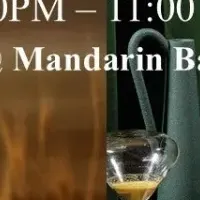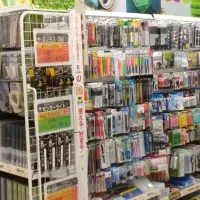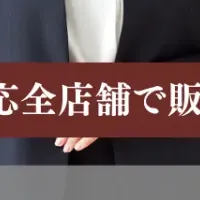
Forecast Shows UV Stabilizers Market Reaching $3.72 Billion by 2030
Overview of the UV Stabilizers Market
The UV stabilizers market has been gaining traction and is projected to expand significantly in the coming years. According to a recent report, it is anticipated that this market will grow from $2.53 billion in 2024 to $3.72 billion by 2030, with a compound annual growth rate (CAGR) of 6.76%. This growth is being strongly driven by a rising necessity for material protection across various industries, with an emphasis on durability against environmental factors, particularly from ultraviolet (UV) rays.
Types of UV Stabilizers
UV stabilizers are integral additives primarily utilized to protect materials from degradation triggered by UV radiation, ensuring longevity and functionality. The primary types of UV stabilizers include:
- - Hindered Amine Light Stabilizers (HALS)
- - UV Absorbers
- - Quenchers
These additives are extensively used in numerous applications, ranging from personal care, cosmetics, sunscreens, and automotive sectors, to packaging and building construction.
Industry Applications and Growth
One of the most prominent sectors where UV stabilizers are essential is the automotive industry. With an increasing focus on enhancing the durability of automotive exteriors, manufacturers are seeking UV-resistant polymers that can withstand the elements, hence, boosting demand for stabilizers. Similarly, in the packaging arena, these stabilizers are crucial for improving shelf life and visual appeal, especially in food, beverage, and consumer goods sectors.
In the agricultural sector, UV stabilizers are vital for extending the life of greenhouse films, nets, and mulch films, all of which are exposed to intense sunlight. Furthermore, personal care products like sunscreens and cosmetics leverage these stabilizers to protect skin effectively from UV-related damage.
The building and construction segment also plays a significant role, accounting for one of the largest shares of the market. UV stabilizers are extensively utilized in various materials like flooring, decking, roofing membranes, and siding, shielding them from sun exposure degradation and ensuring longevity.
Regional Market Insights
The Asia-Pacific region is set to emerge as a pivotal hub for growth in the UV stabilizers market. Rapid industrial production and urbanization, alongside an escalated usage of plastic materials, are key factors propelling this trend. North America and Europe continue to lead in innovation and compliance with regulatory standards which place further emphasis on the dielectric properties and sustainability of UV stabilizers. These regions aim for high-performance stabilization solutions to meet rising market demands.
As companies strive to enhance their market presence, research and development (R&D) initiatives along with strategic partnerships are at the forefront of their growth strategies. Furthermore, growing consumer awareness regarding material sustainability and increased regulatory pressures are expected to bolster demand for high-quality UV protection across diverse industries.
Key Players
Major stakeholders in the UV stabilizers market include:
- - BASF SE (Germany)
- - Rianlon Corporation (China)
- - Suqian Unitech Corp., Ltd. (China)
- - Syensqo SA/NV (Belgium)
- - SONGWON Industrial Co., Ltd. (South Korea)
- - ADEKA Corporation (Japan)
- - SABO S.p.A. (Italy)
- - Arkema (France)
- - Clariant AG (Switzerland)
- - Everlight Chemical Industrial Corporation (Taiwan)
- - SI Group, Inc. (US)
The robust competition between these entities emphasizes the critical importance of R&D and collaborations to innovate and penetrate emerging markets effectively.
Conclusion
In conclusion, the UV stabilizers market is on a promising trajectory towards substantial growth, driven by diverse applications across various industries and the evolving demand for material protection and sustainability. As industries continue to adopt advanced materials that require effective UV stabilization, the market prospects appear bright leading up to 2030.
Topics Consumer Products & Retail)










【About Using Articles】
You can freely use the title and article content by linking to the page where the article is posted.
※ Images cannot be used.
【About Links】
Links are free to use.